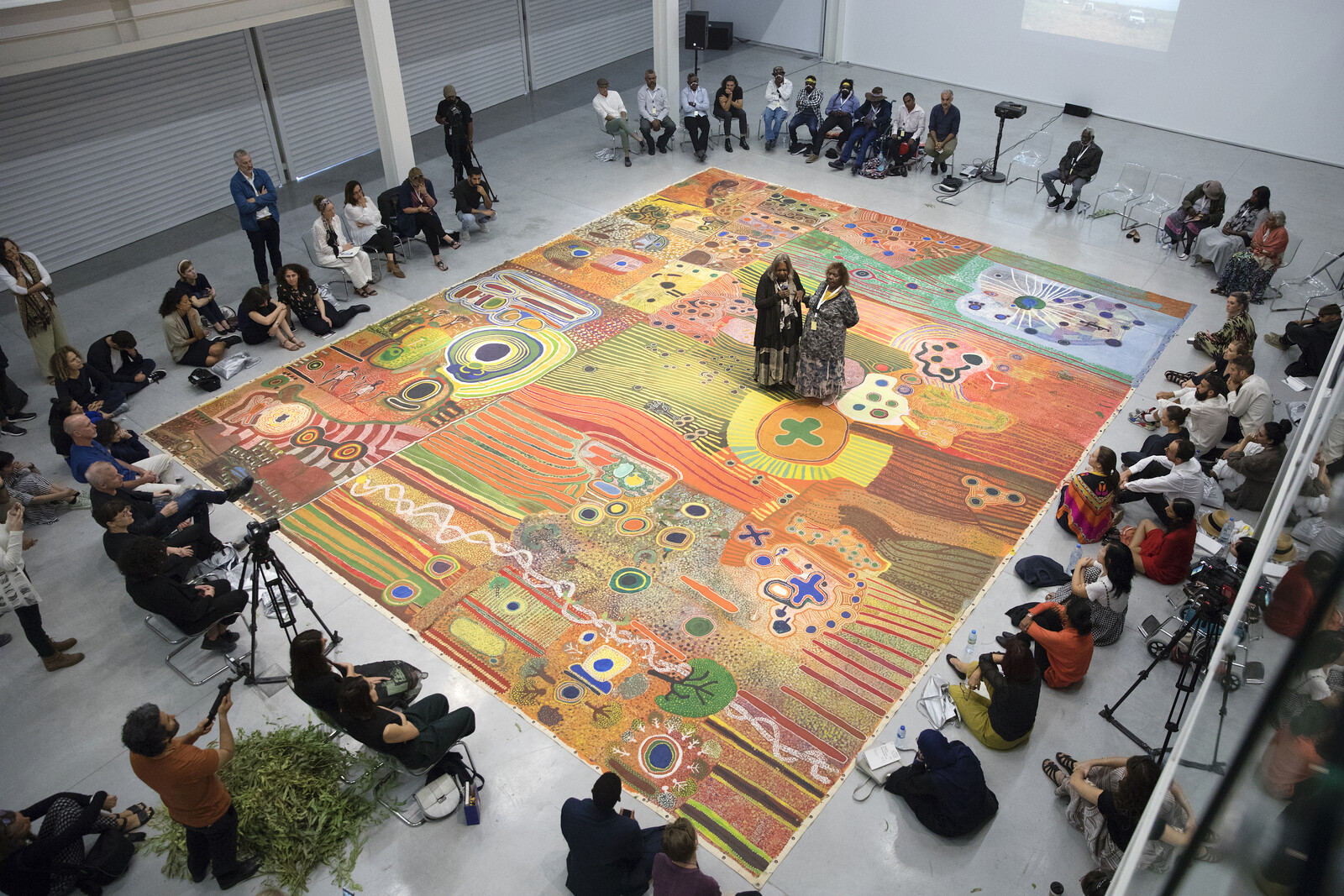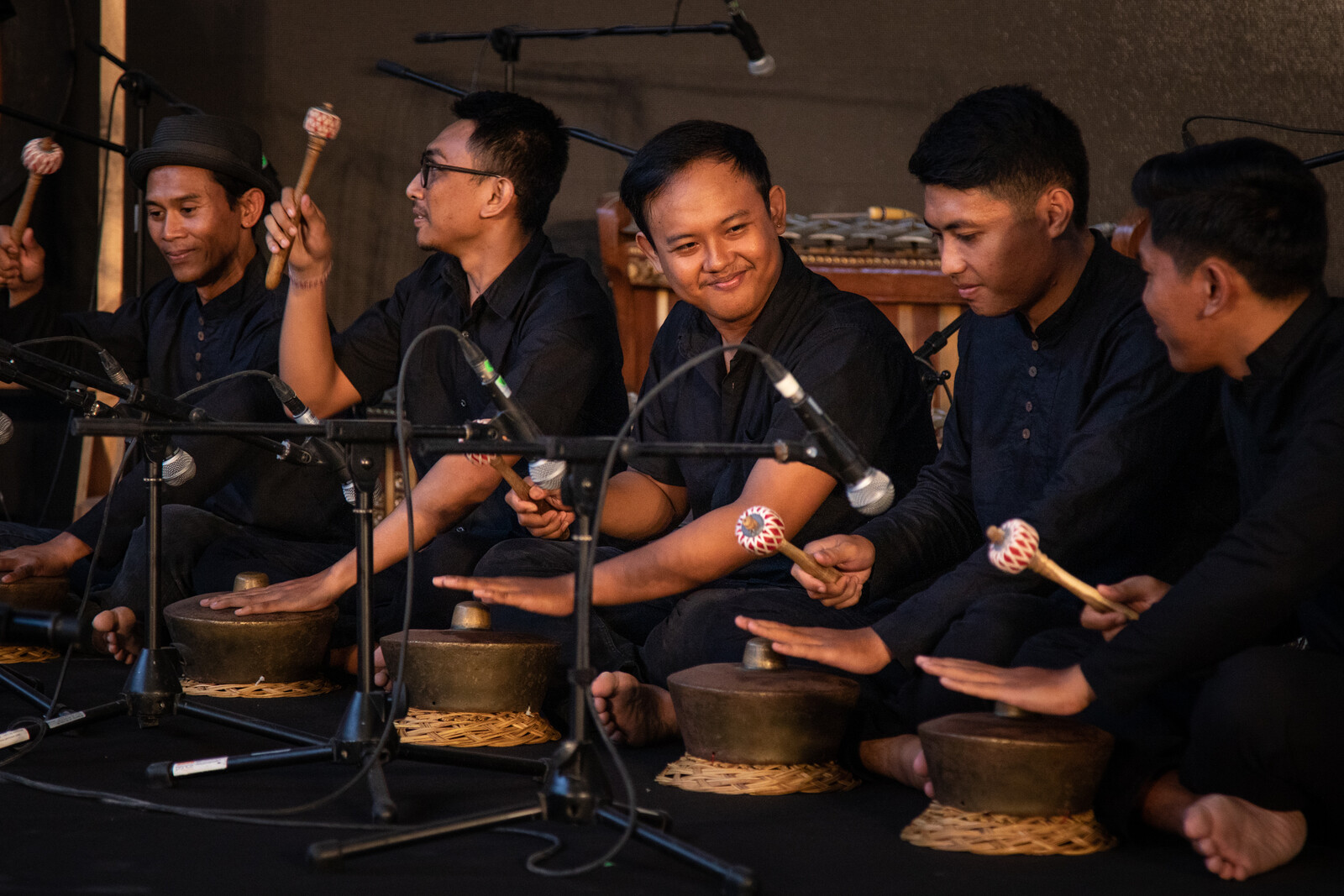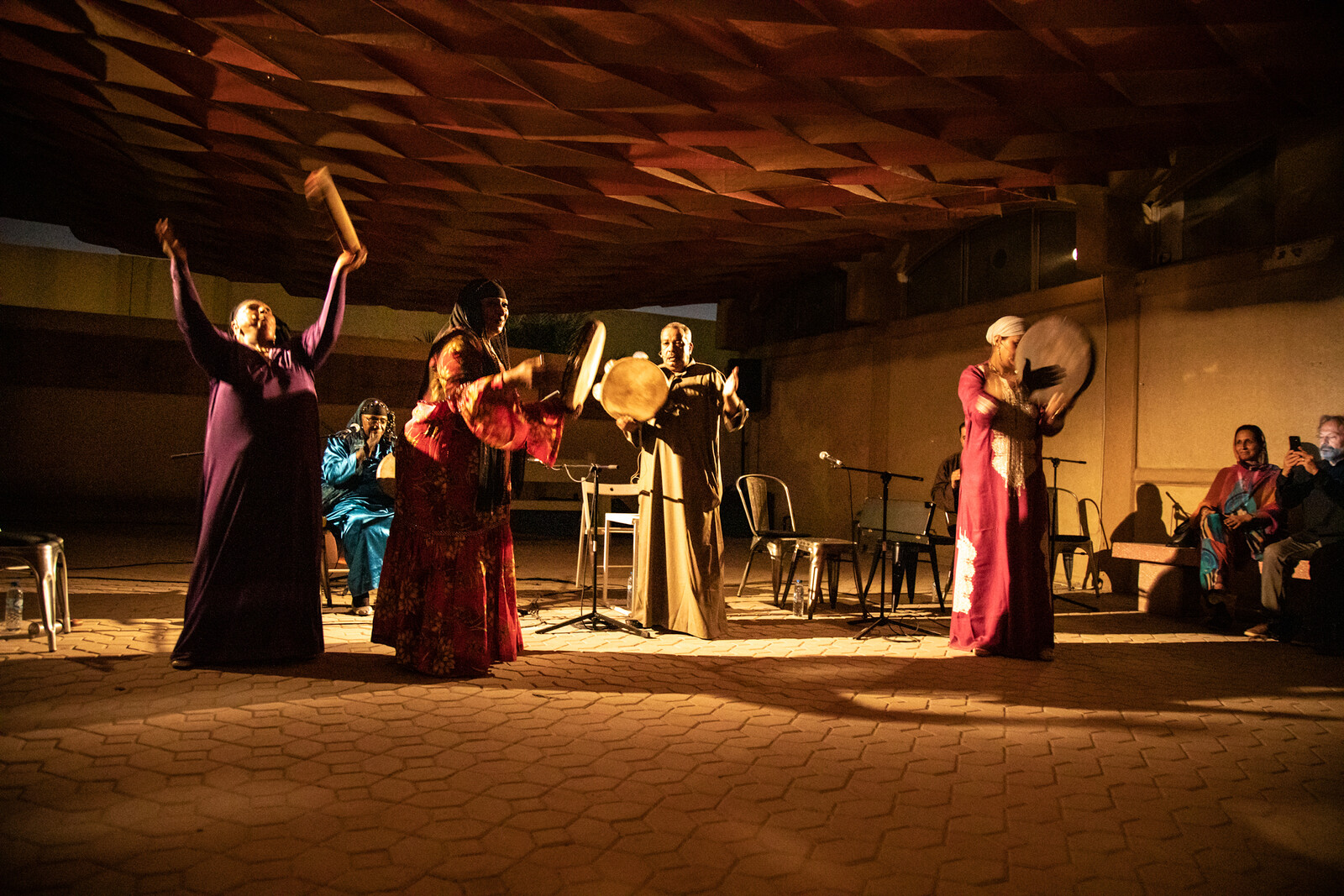The first Sharjah Architecture Triennial brings to the dusty city an art and architecture crowd with varying expectations. Architecture is conceived here in its wider sense—urban studies, environmental sustainability, design—and curator Adrian Lahoud, the dean of the architectural school at the Royal College of Art in London, has widened it further, curating an inclusive and deliberately experimental exhibition.
Lahoud’s project, “The Rights of Future Generations,” rests on the premise that, as Lahoud put it in an introduction to one of the presentations, fighting for the environment is not a new trend out of London and New York, but something which “black and brown people have been doing for the last century.” Throughout the triennial, representatives from a variety of indigenous communities—people coming from regions as diverse as the Chilean mountains, the Great Sandy Desert of Australia, and stretches of Upper Egypt—and researchers from threatened or developing communities in places such as Gaza, Bangladesh, Senegal, and Iran presented strategies of adapting to climate change and ongoing colonialism in talks, performances, and exhibitions. Importantly, the triennial aims for the sweet spot between research and activism, with the goal of affecting change on the ground, rather than simply presenting a display of potential change. For example, in a lecture accompanying their project The Atacama Lines (2019), the leader of Chile’s Atacama tribe used the Sharjah platform to declare his lands to be sovereign territory. The proclamation exemplifies their use of cultural capital: the Atacama people have secured UNESCO protection for the immense geoglyphs they have built in the mountains. They have leveraged this UNESCO status, and the tourism potential that accompanies it, to safeguard their lands, shielding them from resource extraction that was affecting their water sources; their Sharjah invitation builds further international support for their legal claim. After the presentation, the atmosphere was euphoric: the audience gave a standing ovation, the Atacama team performed a song.
The triennial is spread across two reclaimed sites: the former elementary school Al-Qasimiyah, from the 1970s, and the city’s old fruit and vegetable market Al Jubail, a long corridor of a building in which interior stalls once faced one another, built in the 1980s. The adaptation of disused buildings as exhibition spaces is a typical biennial (or here triennial) strategy, but it has particular resonances in Sharjah, where it becomes part of a generational move to value the country’s 1970s and ’80s modernist concrete structures as essential to its history, particularly in contrast to the newer glass towers that signal globalization. Housed within the open courtyard of the Al-Qasimiyah school, still decorated with guiding sentiments such as “salaam” (or peace), the triennial held the lecture and music program that in many ways was the core of the event: Lahoud complemented, as far as he was able, the displays with cultural forms drawn from the communities themselves, such as the Atacama’s song, Upper Egyptian folk music, and gamelan concerts. In Al Jubail market, a collaborative team led by Adam Jasper showed a video installation, Priests and Programmers, detailing a theory about the Balinese irrigation system. In the 1980s, the American anthropologist J. Stephen Lansing argued that Balinese islanders’ farming method was so synchronized with their cultural life that their religious offerings were also a way of maintaining the ecosystem.1 The Balinese organization of time itself, he argued, likewise reflects the particular temporality of growing rice, such that the weeks are made of variable lengths, according to what happens within them. Lansing further suggested that this temporal variability is reflected in the progressive scales of gamelan, the complex Indonesian musical form. In Sharjah, the triennial invited the music ensemble of Gamelan Salukat and Dewa Alit to perform amid the lecture presentations of the opening days, effectively alternating the Western exhibition format in which the theories were given with the Balinese mode of cultural performance that embodied them.
In some of the most persuasive moments, this move toward a plurality of formats underscored how rights—the legal framework noted in the title—are another cultural construct: specifically the one used by those in power. The triennial brought to Sharjah a mammoth painting (Ngurrara Canvas II, from the early 1990s) made by members of the Australian Aboriginal tribe Ngurrara. The painting was used as legal evidence in a landmark land-rights case decided in favor of the tribe: because of its status for the Ngurrara as both cartographic representation and embodiment of their territory in the Great Sandy Desert, it showed the ongoing relation of the people to their native territory, even though many of them had grown up in urban settlements. Recouping that history in Sharjah were members of the Ngurrara, who activated the canvas in a traditional ceremony, where visitors were invited to brush the edges of the canvas with eucalyptus branches. Three members of the tribe, in white face paint and bright yellow attire, then danced across the painting, moving it away from artifact and into a living object, and implicitly forming a contrast to the performative mode of Western legal systems. Elsewhere, legal frameworks were shown to be incommensurate to the climate emergency: the Bangladeshi architect Marina Tabassum reconstructed, in Inheriting Wetness (2019), the wood and metal houses built on stilts that the inhabitants of southern Bangladesh have used in response to land loss in the Ganges Delta, where land erosion happens faster than the authorities are able—or willing—to keep up with. The houses, assembled from kits, are means of working with the seasonal floods, as new generations find themselves owning land that no longer exists.
The triennial’s goals are ambitious, and some of the presentations are uneven. As always with periodic exhibitions, one wonders how much will be left for local residents once the front-loaded first days of performances and talks are gone; one queries the sustainability of the ecologically-concerned event, for which many participants and visitors fly in, and laments the opacity of some of the exhibited research presentations. There were stirring moments, but jarring ones too: the Ngurrara canvas ceremony felt particularly uncomfortable to watch, given the long history of white people, such as myself, peering at indigenous performances. The capacity of this event to effectively transplant anthropological research modes into a performance-based setting in a triennial hinged to an extent on what defines “us” and “them,” a question that has particular valences in the UAE context. The triennial was founded by Sheikh Khalid Al Qasimi, who died unexpectedly this July. His twin sister, Hoor Al Qasimi, who founded the Sharjah Art Foundation, took over to see this edition through. Though this event remains separate from the Art Foundation and its biennial, the Sharjah Architecture Triennial, along with the Africa Institute, now forms part of a nexus of Sharjah institutions conversant in critical theory and acting within the contemporary art field. These institutions have positioned themselves within the context of the Global South, participating in recent curatorial and scholarly interest in 1970s liberation and anti-colonialist movements, and giving the first serious exhibition platforms and commissions to many artists of the MENASA region. This track record, and the emirate’s extensive demographics, gives Sharjah’s institutions a sense of solidarity, and even of mission, with other parts of the Global South. This solidarity has meant greater representation for many regions in an art context, but the transition here into living rites and, to a lesser extent, policy strategies brought to the fore questions of who gets to speak for whom, and for what audience.
That being said, I loved this triennial: I am fed up of the contradiction between the art world’s liberal positioning and its reliance on the art market, and the project—with no such market in sight—challenged both exhibition norms and the sequestration of the cultural field from channels through which to effect lasting change. During the opening days, a working group was assembled, including figures such as former Brazilian President Dilma Rousseff and former South African President Thabo Mbeki, that will meet regularly throughout the duration of the show to develop a charter on the rights of future generations, called the Sharjah Charter. The goal of the triennial is to have an impact. The verdict won’t be in reviews such as these, but in whether change and new legal frameworks are indeed effected.
J. Stephen Lansing, “Balinese ‘Water Temples’ and the Management of Irrigation,” American Anthropologist vol. 89, no. 2 (June 1987): 326–341.











